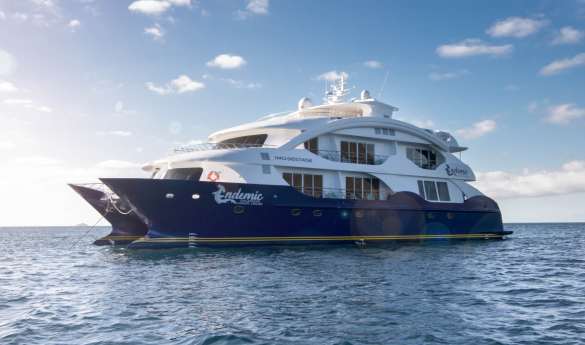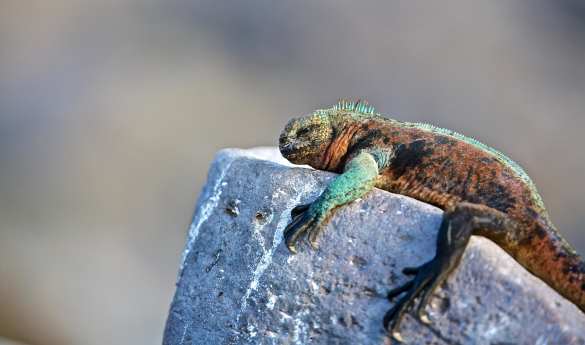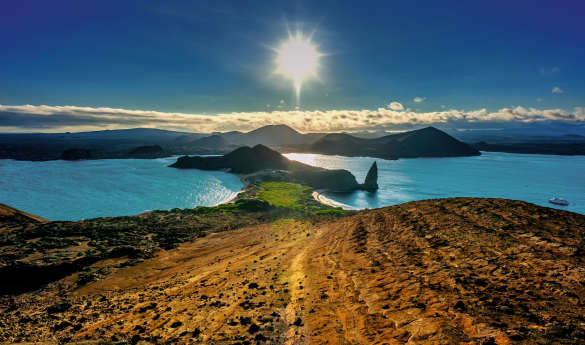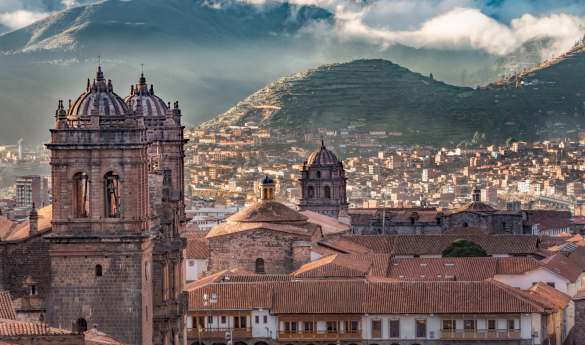Wildlife 101: Famous Birds to See on the Galapagos Islands
Whether you’re on a romantic honeymoon getaway or a family expedition, seeing the bird life in the Galapagos is a must for any itinerary. But with so many species and islands, where do you start?
01 June 2023

The Galapagos Island’s birds offer visitors a unique glimpse into the wonders of the natural world. More than just a fantastic spectacle to behold, these birds hold clues to Darwin’s theory of evolution. Each species has developed its own clever adaptations, which have allowed them to flourish in this isolated ecosystem. And beyond their scientific significance, the quirky characters and eye-catching appearance of these birds are a thrill to see – whatever your age or interest.
Among the cacophony of feathered friends in the Galapagos Islands are the favored blue and red-footed boobies, which are known for their brightly colored feet and wonderful courtship dance. Then there are Darwin's finches, 14 species of closely related, little birds, which are famous for their role in his theory of evolution. Among them is the rarest bird in the Galapagos Islands, the mangrove finch. There are thought to be only 100 of these endangered birds left. Meanwhile, seeing the largest bird in the Galapagos, the waved albatross, perform its incredible bill clacking, head shaking, and wing flapping mating dance is like having front-row seats to a nature show.
So, whether you're a seasoned birdwatcher or a curious traveler, a visit to the Galapagos is sure to be a memorable experience. Read on to discover which birds make our must-see list.
What Kind of Birds Live on the Galapagos?
Galapagos Island birds can be split into two main categories: land birds and sea birds.
Land birds are hardy animals. They have developed traits to help them endure an environment where food and water can be scant. Long beaks to peck insects between tiny cracks or break open nuts and seeds efficiently are among their clever features. Land birds include:
- Finches
- Mockingbirds
- Doves
- Hawks
- Owls
The second kind is sea birds, which live on and in the ocean, returning to the islands to lay their eggs and rest. Being strong swimmers and excellent divers helps them to catch their marine life diet. These include:
- Boobies
- Frigatebirds
- Pelicans
- Cormorants
- Albatrosses
Among the Galapagos’ sea birds are also the islands’ two famous flightless birds, the flightless cormorants, and Galapagos penguins.
Famous Birds to See on the Galapagos Islands
The Galapagos Islands might be an ideal place for a vacation if you’re an avid ornithologist, but the colors, mating dances, and eccentric behaviors of the birds in the Galapagos Islands will enthrall everyone, from children to grandparents and everyone in between. Here are some of the best birds on the Galapagos:
1. Blue-footed Booby

- Where it can be found: North Seymour, Española, Fernandina, Floreana, Isabela, Pinzon, and Santa Cruz
- Size: height: 2-2.7ft, weight: 3.3lbs, wingspan: 4.9ft
- Diet: Anchovies, sardines, and other small fish
- Conservation status: Least concern
With their clumsy walk and bright blue feet, this booby is one of the most popular birds in the Galapagos and one that our guests – especially children – take great joy in seeing. Their name comes from the Spanish word ‘bobo,’ which means ‘clown’, and the blue-footed booby is sure to put a smile on your face, particularly if you’re lucky enough to witness its mating dance between June and August. The male species starts by showing off its beautiful feet – the bluer the better according to the females as this is a sign of good genes. It then bows its head, before offering its beloved a gift (a small stone or stick should do the trick) in the hope that its attention will be reciprocated.
2. Waved Albatross

- Where it can be found: Española
- Size: height: 2.6-3ft, weight: 6-8lbs, wingspan: 7-8ft
- Diet: Fish, squid, krill, crabs, lobsters, shrimp, and other crustaceans
- Conservation status: Critically endangered
The largest bird in the Galapagos, the waved albatross is an elegant species, that can spend years at sea without touching land thanks to its enormous wingspan. It only comes back down to earth for its impressive mating dance, which lasts 20 minutes and includes bowing, before circling the female, flapping its wings, and honking loudly, to which the female may respond with her own dance. To witness the spectacle, make sure your Galapagos cruise takes you to the island of Española in October, which is the only place in the world where the waved albatross can be seen during the breeding season.
3. Galapagos Penguin

- Where it can be found: They are found mainly on Isabela and Fernandina islands, but they can also be seen on Floreana, Santiago, and Bartolome.
- Size: height: 1.6-1.8ft tall, weight: 5.5lbs
- Diet: Cold-water schooling fish, such as anchovies, sardines, and mullet
- Conservation status: Endangered
Another firm favorite in the line-up of Galapagos birds, this penguin is the only one you’ll find north of the equator. Its charming waddle will make your kids smile as they line up to dive into the water where they speed through the sea to catch their prey at speeds of up to 21 miles per hour. These small but hardy penguins have adapted to the warmer climate by hiding in caves and panting heavily, but they also survive thanks to cold currents in the water. If Bartolome Island is on your itinerary, don’t miss swimming with the penguins around Pinnacle Rock.
4. Galapagos Hawk

- Where it can be found: Isabela and Fernandina
- Size: height: 1.8ft, weight: 1.4-1.8lbs, wingspan: 3.9ft
- Diet: Invertebrates such as giant centipedes and locusts, but also occasionally snakes, rodents, lizards, young iguanas, turtle hatchlings, and other birds.
- Conservation status: Vulnerable
The Galapagos hawk is the top predator on the islands, meaning it is at the top of the food chain. Although that might sound rather threatening, they are an important part of the ecosystem, keeping numbers of other prey down. They can be quite cunning with their approach to finding food too – you might even see them dropping rocks onto the eggs of seabirds to crack them open and get the yolk inside. This is not seen in hawks in the rest of the world and emphasizes how ingenious the birds in the Galapagos have become to survive. Luckily, Galapagos hawks aren’t bothered by humans, and you can get very close to them sometimes, however, they are fiercely protective of their young so keep clear of chicks and nests.
Read about ecotourism in the Galapagos Islands.
5. Darwin's Finches

- Where it can be found: Most are found on the main islands, including Isabela, Genovesa, Floreana, Fernandina, and Santa Cruz, although some, like the sharp-beaked ground finch, can only be found on the remote islands of Wolf and Darwin.
- Size: height: 3.9-7 inches, weight: varies, wingspan: varies
- Diet: This differs depending on the flora and fauna available on the islands they live on. Typically, they eat small insects, beetle larvae, and vegetation.
- Conservation status: Most are least concern; but the mangrove finch is critically endangered and the large tree finch, woodpecker finch, and green warbler finch are vulnerable.
It is miraculous to think of the importance of these tiny birds who were key to Darwin’s theory of evolution. He noticed that while the 14 closely related Galapagos birds were all similar in shape and size, their beaks were distinctive depending on which island they lived on. He thought they had developed in such a way to allow the birds to scavenge for and eat different food and ever since Darwin’s finches have become a symbol of evolution. The little birds are still studied today, as more is learned about evolution. These are fascinating creatures to observe, particularly with expert naturalists who will point out the subtle differences between them. If ornithology, science, or history excites you then don’t miss looking for the following varieties:
- Mangrove finch
- Small, medium, and large tree finches
- Small, medium, and large ground finches
- Green and grey warbler finches
- Woodpecker finch
- Large cactus finch
- Common cactus finch
- Sharp-beaked ground finch (aka the vampire bird of the Galapagos islands, because of the way it pecks at the feathers of Nazca boobies until they bleed and then sucks its blood).
6. Lava Heron

- Where it can be found: Along the shoreline of all the islands.
- Size: height: 1.1ft tall, weight: 4.6lbs, wingspan: 2ft
- Diet: Small fish and crabs, which they can catch at a rate of two to three per minute.
- Conservation status: Least concern
As their name suggests, these herons live and nest within the lava rocks that line the islands’ coasts, as well as in saltwater lagoons and mangrove forests. Their grey/brown feathers are camouflaged against the basalt rocks which they perch on, frozen like statues, ready for their photo opportunity. The birds appear hidden apart from their yellow eyes and spindly legs, which turn bright orange during mating season. Another clever bird, they use their vast wings to create shade over the sea attracting curious fish to the surface, which they then scoop up in their beaks. They’ve learned to eat quickly too to avoid other birds stealing their food.
7. Magnificent Frigate

- Where it can be found: Santa Fe, North Seymour, Floreana, San Cristobal and Genovesa
- Size: height: up to 3.2ft tall, weight: 2.4-3lbs, wingspan: 7-7.8ft
- Diet: Fish and small crustaceans, as well as newly hatched green turtles.
- Conservation status: Least concern
You might see Magnificent Frigates with their bold red chests chasing other birds on the Galapagos Islands, such as tropicbirds or boobies, grabbing their tail feathers and shaking them in the hope that they’ll regurgitate their recently eaten food. The frigates then eat the stolen food before jumping into the sea! This unconventional way of hunting has given them the nickname of pirate bird. Meanwhile, Darwin called them the condor of the oceans, due to the hypnotic way they glide through the sky for days on end. Their large wings give them the power to fly for vasts amount of time, and their body shape allows them to be particularly agile, doing loop-de-loops and showing off in the air.
8. Flightless Cormorant

- Where it can be found: Isabela and Fernandina
- Size: height: 2.9-3.2ft tall, weight: 6-11lbs
- Diet: Eels and octopus, which they reach by diving deep onto the ocean floor.
- Conservation status: Vulnerable
Natural selection has meant that these cormorants no longer have wings that work. This was in part due to their weight – they are the heaviest birds in the Galapagos – but also due to a lack of land predators, meaning they didn’t need to fly to survive. Instead, the birds that were the best swimmers passed on their genes more successfully, allowing them to catch their food in the water. Now they use their stunted wings to steady themselves as they leap over rocks from coast to coast. Their breeding dance is another treat for visitors as it sees the couples intertwine their necks whilst spinning in a tight circle.
Start Planning Your Trip Today
Whether or not you have a passion for birdwatching, the 50 or so species you will find in the Galapagos Islands will provide you with hours of entertainment and stunning photographs to take home. Most of our Galapagos cruises will take you to the islands that these birds inhabit, so start planning by getting in touch with one of Scott Dunn’s travel specialists.
Why Scott Dunn?
Unique to You
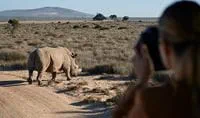
- We listen to your travel goals and craft unique trips that are personalized to you.
- We’re with you every step of your life’s travel journey, from honeymoons to family trips and beyond.
Seamless Service

- Global offices in the UK, US, and Singapore for 24/7 seamless service.
- We offer flexibility if your plans change so you can book with confidence and peace of mind.
Carefully Curated Collection

- We’ve curated an elevated collection of accommodation, experiences, and guides.
- Committed to fostering close global relationships to continue bringing you unique experiences.
Luxury in Every Sense

- We deliver a sense of luxury that matters most to you.
- Awarded Condé Nast Traveler’s Top Travel Specialists in the World 12 years in a row.

